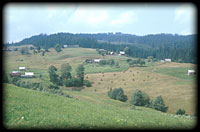
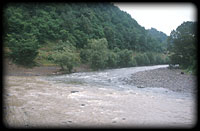 Two springs of the Tisza having their source in 1600 and 1650 m elevation, Black and White Tisza start in the spruce zone and on flowing down they reaches the zone of mountain beech forests, which covers the predominant part of the North-Eastern Carpathians. Due to clearings, on the place of the original forests, in many places mountain meadows, pastures can be found. In narrow valleys between mountain slopes the river is accompanied by alder forests and tall herbaceous communities only in a tight streak. On higher elevations grey alder (Alnus incana) is typical, going furhter down alder (Alnus glutinosa) becomes more common. Characteristic tall herbaceous plantd on the river bank are: large yellow ox-eye (Telekia speciosa), cabbage thistle (Cirsium oleraceum) or white butterbur (Petasites albus). In the widening valley on the river side bushy willow communities and galleries appeas gradually, which become dominant in the flood plains of the slowing Tisza. Two springs of the Tisza having their source in 1600 and 1650 m elevation, Black and White Tisza start in the spruce zone and on flowing down they reaches the zone of mountain beech forests, which covers the predominant part of the North-Eastern Carpathians. Due to clearings, on the place of the original forests, in many places mountain meadows, pastures can be found. In narrow valleys between mountain slopes the river is accompanied by alder forests and tall herbaceous communities only in a tight streak. On higher elevations grey alder (Alnus incana) is typical, going furhter down alder (Alnus glutinosa) becomes more common. Characteristic tall herbaceous plantd on the river bank are: large yellow ox-eye (Telekia speciosa), cabbage thistle (Cirsium oleraceum) or white butterbur (Petasites albus). In the widening valley on the river side bushy willow communities and galleries appeas gradually, which become dominant in the flood plains of the slowing Tisza.
|
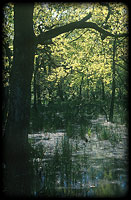 Before river control the overwhelming part of the Great plain belonged to the inundation area of the Tisza, thus the plant and animal life of which were basically determined by the water and the floods of the river. According to water conditions characteristic zonal plant communities have been formed, Tisza was accompanied by flood plain forests and marshes in many kilometres wide. After river control the significant part of the flood plain has got tho the protected side, plant and animal life - primarily due to the absence of inundations and spreading of agriculture - has been transformed. Most part of flood plain communities along the river were restricted to the forebank. In spite of this in the ecosystem of the Great plain river Tisza and its forebank, and the adjacent remains of flood plains were playing a central role, they were giving the backbone of the biological system working at regional level. Before river control the overwhelming part of the Great plain belonged to the inundation area of the Tisza, thus the plant and animal life of which were basically determined by the water and the floods of the river. According to water conditions characteristic zonal plant communities have been formed, Tisza was accompanied by flood plain forests and marshes in many kilometres wide. After river control the significant part of the flood plain has got tho the protected side, plant and animal life - primarily due to the absence of inundations and spreading of agriculture - has been transformed. Most part of flood plain communities along the river were restricted to the forebank. In spite of this in the ecosystem of the Great plain river Tisza and its forebank, and the adjacent remains of flood plains were playing a central role, they were giving the backbone of the biological system working at regional level.
|
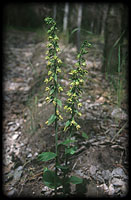 The vegetation of the flood plaind, and so that of the forebank directly depends on the river, on water quantity and quality of that. As a result of different frequency and duration of inundations, flood plains of different level have different vegetation by the Tisza. In the river bed, on the surface of decaying material, a pioneer vegetation tries to establish year by year. On the silt unique silt dweller and bed-weed communities, mainly consisting of common weeds, are dominant. On the upper ridge of the bed characteristic woody communities, riverside willow scrub (Salicetum triandrae) accompany the river. Willows, hardly few metres tall form a brush-dense thicket with poor understory. Willow scrub is followed by soft-wood (also called willow-poplar) gallery (Salicetum albae-fragilis), very typical of the Tisza forebank, on slightly higher elevations. The vegetation of the flood plaind, and so that of the forebank directly depends on the river, on water quantity and quality of that. As a result of different frequency and duration of inundations, flood plains of different level have different vegetation by the Tisza. In the river bed, on the surface of decaying material, a pioneer vegetation tries to establish year by year. On the silt unique silt dweller and bed-weed communities, mainly consisting of common weeds, are dominant. On the upper ridge of the bed characteristic woody communities, riverside willow scrub (Salicetum triandrae) accompany the river. Willows, hardly few metres tall form a brush-dense thicket with poor understory. Willow scrub is followed by soft-wood (also called willow-poplar) gallery (Salicetum albae-fragilis), very typical of the Tisza forebank, on slightly higher elevations. 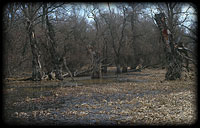 These forests stand almost exclusively on the forebank still today, their dominant tree species are willows and poplars, such as white willow (Salix alba), crack willow (Salix fragilis), black poplar (Populus nigra) with characteristic trunk, but in addition to these, the individuals of many other species appear mixed. Under the trees, shrub layer is generally not too dense, the most characteristic here are dogwood (Cornus sanguinea) and dewberry (Rubus caesius) creeping on the ground. Because of common water cover and continuous movements of alluvial deposits, the understory consists of few species, These forests stand almost exclusively on the forebank still today, their dominant tree species are willows and poplars, such as white willow (Salix alba), crack willow (Salix fragilis), black poplar (Populus nigra) with characteristic trunk, but in addition to these, the individuals of many other species appear mixed. Under the trees, shrub layer is generally not too dense, the most characteristic here are dogwood (Cornus sanguinea) and dewberry (Rubus caesius) creeping on the ground. Because of common water cover and continuous movements of alluvial deposits, the understory consists of few species, 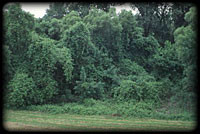 and changes relatively quickly. Liana community, consisting of vines, connecting certain layers and settling on other plants, is very typical to flood plain forests. Such a vine is hop (Humulus lupulus), bittersweet (Solanum dulcamara), hedge bindweed (Calystegia sepium), the rare grove vine (Vitis sylvestris), the common alien riverside vine (Vitis riparia, and Virginia creeper Parthenocissus inserta), valamint a prickly cucumber (Echinocystis lobata). Some members of the understory we know as weeds, such as nettle (Urtica dioica), which is quoth he native here, they started they conquering way from here to the landscape transformed by man. Besides weeds certain sedge (Carex spp.) and bistort (Polygonum spp.) species are also typical, and the more sparse, but even more beautiful, protected summer snowflake (Leucojum aestivum). Willow-poplar floos plain forests have almost disappeared from along controlled European rivesr, so vast forebank galleries of the Tisza have a great importance. and changes relatively quickly. Liana community, consisting of vines, connecting certain layers and settling on other plants, is very typical to flood plain forests. Such a vine is hop (Humulus lupulus), bittersweet (Solanum dulcamara), hedge bindweed (Calystegia sepium), the rare grove vine (Vitis sylvestris), the common alien riverside vine (Vitis riparia, and Virginia creeper Parthenocissus inserta), valamint a prickly cucumber (Echinocystis lobata). Some members of the understory we know as weeds, such as nettle (Urtica dioica), which is quoth he native here, they started they conquering way from here to the landscape transformed by man. Besides weeds certain sedge (Carex spp.) and bistort (Polygonum spp.) species are also typical, and the more sparse, but even more beautiful, protected summer snowflake (Leucojum aestivum). Willow-poplar floos plain forests have almost disappeared from along controlled European rivesr, so vast forebank galleries of the Tisza have a great importance.
|
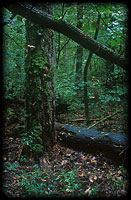 Hardwood (or oak-ash-elm) galleries (Fraxino pannonicae-Ulmetum) on the only sparsely inundated, so-called high flood area, mostly have got to the protected side, and their considerable former extension has falled to a minute fragment of it. Remains of the old Great plain forests can be found in some places on the forebank, in other places outside that. Dominant tree species of hardwood gallery, considered as a climax association, gave its name are the "lowland tree" pedunculate oak (Quercus robur), Hungarian ash (Fraxinus angustifolia subsp. pannonica), fluttering lem (Ulmus laevis), but beside these Hardwood (or oak-ash-elm) galleries (Fraxino pannonicae-Ulmetum) on the only sparsely inundated, so-called high flood area, mostly have got to the protected side, and their considerable former extension has falled to a minute fragment of it. Remains of the old Great plain forests can be found in some places on the forebank, in other places outside that. Dominant tree species of hardwood gallery, considered as a climax association, gave its name are the "lowland tree" pedunculate oak (Quercus robur), Hungarian ash (Fraxinus angustifolia subsp. pannonica), fluttering lem (Ulmus laevis), but beside these 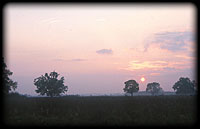 many other tree specie appear here. Shrub layer is also diverse and dense, we can only pick out hawthorn (Crataegus spp.) species, guelder rose (Viburnum opulus), dogwood (Cornus sanguinea), and Tartarian maple (Acer tataricum). The understory is very rich, it is similar to fresh, mountain forests in many elements. Geophytes bloom before the leaves unfold, e. g. alpine squills (Scilla bifolia agg.), spring snowflake (Leucojum verum), corydales (Corydalis spp.), in some places ramsons (Allium ursinum), yellow anemone (Anemone ranunculoides), the very common and typical lesser celandine (Ficaria verna). Later blooms woodruff (Asperula odorata), ground elder (Aegopodium podagraria), enchanter's nightshade (Circaea lutetiana). many other tree specie appear here. Shrub layer is also diverse and dense, we can only pick out hawthorn (Crataegus spp.) species, guelder rose (Viburnum opulus), dogwood (Cornus sanguinea), and Tartarian maple (Acer tataricum). The understory is very rich, it is similar to fresh, mountain forests in many elements. Geophytes bloom before the leaves unfold, e. g. alpine squills (Scilla bifolia agg.), spring snowflake (Leucojum verum), corydales (Corydalis spp.), in some places ramsons (Allium ursinum), yellow anemone (Anemone ranunculoides), the very common and typical lesser celandine (Ficaria verna). Later blooms woodruff (Asperula odorata), ground elder (Aegopodium podagraria), enchanter's nightshade (Circaea lutetiana).
|
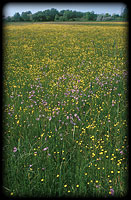 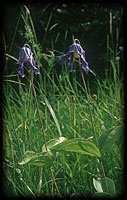 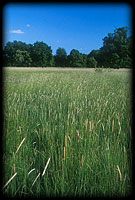 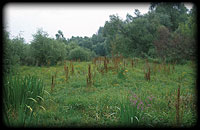 On the former place of galleries, seminatural habitats made by clearings, different types of marsh meadows and hayfields are also charactreristic to flood areas. On tall-grass meadows mostly creeping bent (Agrostis stolonifera) and typicak meadow foxtail (Alopecurus pratensis) are dominant, and the flower pomp of these meadows is provided by many dicots, such as different types of buttercups (Ranunculus spp.), ragged robin (Lychnis flos-cuculi) or the protected solitary clematis (Clematis integrifolia). On the former place of galleries, seminatural habitats made by clearings, different types of marsh meadows and hayfields are also charactreristic to flood areas. On tall-grass meadows mostly creeping bent (Agrostis stolonifera) and typicak meadow foxtail (Alopecurus pratensis) are dominant, and the flower pomp of these meadows is provided by many dicots, such as different types of buttercups (Ranunculus spp.), ragged robin (Lychnis flos-cuculi) or the protected solitary clematis (Clematis integrifolia).
|
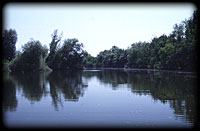 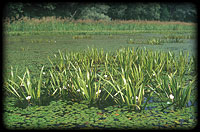 Deas beds are special gems of Tisza flood area. These are stagnant waters formed by natural strangulations of overexcavated bends of the former bed, or by cuttings during river control. Depending on the degree of banking up and water supply their vegetation is very variable, but they are common in the fact, that, water world of mortlakes unspoiled by civilization represents a prominent nature conservation value. Here frequently dense and varianle waterweed vegetation dominates with many interesting plants, such as water chestnut (Trapa natans), water soldier (Stratiotes aloides), water spangle (Salvinia natans), white water-lily (Nymphaea alba), amphibious bistort (Polygonum amphibium) or rootless duckweed (Wolffia arrhiza). In shallower water alternately reed (Phragmites australis), reedmaces (Typha spp.), common bulrush (Schoenoplectus lacustris), reed sweet-grass (Glyceria maxima), common bur-reed (Sparganium erectum) and sedges (Carex spp.) appear, froming initiatives of moors as floating carpets. Deas beds are special gems of Tisza flood area. These are stagnant waters formed by natural strangulations of overexcavated bends of the former bed, or by cuttings during river control. Depending on the degree of banking up and water supply their vegetation is very variable, but they are common in the fact, that, water world of mortlakes unspoiled by civilization represents a prominent nature conservation value. Here frequently dense and varianle waterweed vegetation dominates with many interesting plants, such as water chestnut (Trapa natans), water soldier (Stratiotes aloides), water spangle (Salvinia natans), white water-lily (Nymphaea alba), amphibious bistort (Polygonum amphibium) or rootless duckweed (Wolffia arrhiza). In shallower water alternately reed (Phragmites australis), reedmaces (Typha spp.), common bulrush (Schoenoplectus lacustris), reed sweet-grass (Glyceria maxima), common bur-reed (Sparganium erectum) and sedges (Carex spp.) appear, froming initiatives of moors as floating carpets.
|
|
The chain of navvy forests is also a tipical Tisza habitat. Nature gradually reconquer the former clay digging pits (navvies), they become reforested, organically fitting in the riverine community.
|
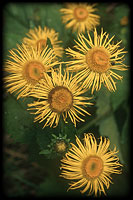 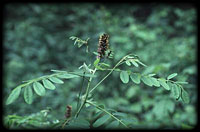 The river valley acts also as a classic ecological corridor. So appear the mountain plant species of Upper Tisza: e. g. Large yellow ox-eye (Telekia speciosa), alternate-leaved golden saxifrage (Chrysosplenium alternifolium), butterburs (Petasites spp.). This fact however has unfavourable sides as well, because the corridor is "open" also for aggressively spreading adventives (aliens), such as false indigo (Amorpha fruticosa), ash-leaved maple or box-elder (Acer negundo), Pennsylvanian ash (Fraxinus pennsylvanica), prickly cucumber (Echinocystis lobata), Virginia creeper Parthenocissus inserta), Japanese bistrot (Fallopia japonica), tall golden-rod (Solidago gigantea), which are able to push out even the original vegetation. At the same time Tisza valley and Tisza flood plain have their own endemic plant species, which exist only here, such as Tisza-side daisy (Chrysanthemum serotinum) and Debrecen horse-radish (Armoracia macrocarpa), which of course are under the protection of nature conservation. The river valley acts also as a classic ecological corridor. So appear the mountain plant species of Upper Tisza: e. g. Large yellow ox-eye (Telekia speciosa), alternate-leaved golden saxifrage (Chrysosplenium alternifolium), butterburs (Petasites spp.). This fact however has unfavourable sides as well, because the corridor is "open" also for aggressively spreading adventives (aliens), such as false indigo (Amorpha fruticosa), ash-leaved maple or box-elder (Acer negundo), Pennsylvanian ash (Fraxinus pennsylvanica), prickly cucumber (Echinocystis lobata), Virginia creeper Parthenocissus inserta), Japanese bistrot (Fallopia japonica), tall golden-rod (Solidago gigantea), which are able to push out even the original vegetation. At the same time Tisza valley and Tisza flood plain have their own endemic plant species, which exist only here, such as Tisza-side daisy (Chrysanthemum serotinum) and Debrecen horse-radish (Armoracia macrocarpa), which of course are under the protection of nature conservation.
|

 Two springs of the Tisza having their source in 1600 and 1650 m elevation, Black and White Tisza start in the spruce zone and on flowing down they reaches the zone of mountain beech forests, which covers the predominant part of the North-Eastern Carpathians. Due to clearings, on the place of the original forests, in many places mountain meadows, pastures can be found. In narrow valleys between mountain slopes the river is accompanied by alder forests and tall herbaceous communities only in a tight streak. On higher elevations grey alder (Alnus incana) is typical, going furhter down alder (Alnus glutinosa) becomes more common. Characteristic tall herbaceous plantd on the river bank are: large yellow ox-eye (Telekia speciosa), cabbage thistle (Cirsium oleraceum) or white butterbur (Petasites albus). In the widening valley on the river side bushy willow communities and galleries appeas gradually, which become dominant in the flood plains of the slowing Tisza.
Two springs of the Tisza having their source in 1600 and 1650 m elevation, Black and White Tisza start in the spruce zone and on flowing down they reaches the zone of mountain beech forests, which covers the predominant part of the North-Eastern Carpathians. Due to clearings, on the place of the original forests, in many places mountain meadows, pastures can be found. In narrow valleys between mountain slopes the river is accompanied by alder forests and tall herbaceous communities only in a tight streak. On higher elevations grey alder (Alnus incana) is typical, going furhter down alder (Alnus glutinosa) becomes more common. Characteristic tall herbaceous plantd on the river bank are: large yellow ox-eye (Telekia speciosa), cabbage thistle (Cirsium oleraceum) or white butterbur (Petasites albus). In the widening valley on the river side bushy willow communities and galleries appeas gradually, which become dominant in the flood plains of the slowing Tisza.
 Before river control the overwhelming part of the Great plain belonged to the inundation area of the Tisza, thus the plant and animal life of which were basically determined by the water and the floods of the river. According to water conditions characteristic zonal plant communities have been formed, Tisza was accompanied by flood plain forests and marshes in many kilometres wide. After river control the significant part of the flood plain has got tho the protected side, plant and animal life - primarily due to the absence of inundations and spreading of agriculture - has been transformed. Most part of flood plain communities along the river were restricted to the forebank. In spite of this in the ecosystem of the Great plain river Tisza and its forebank, and the adjacent remains of flood plains were playing a central role, they were giving the backbone of the biological system working at regional level.
Before river control the overwhelming part of the Great plain belonged to the inundation area of the Tisza, thus the plant and animal life of which were basically determined by the water and the floods of the river. According to water conditions characteristic zonal plant communities have been formed, Tisza was accompanied by flood plain forests and marshes in many kilometres wide. After river control the significant part of the flood plain has got tho the protected side, plant and animal life - primarily due to the absence of inundations and spreading of agriculture - has been transformed. Most part of flood plain communities along the river were restricted to the forebank. In spite of this in the ecosystem of the Great plain river Tisza and its forebank, and the adjacent remains of flood plains were playing a central role, they were giving the backbone of the biological system working at regional level.
 The vegetation of the flood plaind, and so that of the forebank directly depends on the river, on water quantity and quality of that. As a result of different frequency and duration of inundations, flood plains of different level have different vegetation by the Tisza. In the river bed, on the surface of decaying material, a pioneer vegetation tries to establish year by year. On the silt unique silt dweller and bed-weed communities, mainly consisting of common weeds, are dominant. On the upper ridge of the bed characteristic woody communities, riverside willow scrub (Salicetum triandrae) accompany the river. Willows, hardly few metres tall form a brush-dense thicket with poor understory. Willow scrub is followed by soft-wood (also called willow-poplar) gallery (Salicetum albae-fragilis), very typical of the Tisza forebank, on slightly higher elevations.
The vegetation of the flood plaind, and so that of the forebank directly depends on the river, on water quantity and quality of that. As a result of different frequency and duration of inundations, flood plains of different level have different vegetation by the Tisza. In the river bed, on the surface of decaying material, a pioneer vegetation tries to establish year by year. On the silt unique silt dweller and bed-weed communities, mainly consisting of common weeds, are dominant. On the upper ridge of the bed characteristic woody communities, riverside willow scrub (Salicetum triandrae) accompany the river. Willows, hardly few metres tall form a brush-dense thicket with poor understory. Willow scrub is followed by soft-wood (also called willow-poplar) gallery (Salicetum albae-fragilis), very typical of the Tisza forebank, on slightly higher elevations.  These forests stand almost exclusively on the forebank still today, their dominant tree species are willows and poplars, such as white willow (Salix alba), crack willow (Salix fragilis), black poplar (Populus nigra) with characteristic trunk, but in addition to these, the individuals of many other species appear mixed. Under the trees, shrub layer is generally not too dense, the most characteristic here are dogwood (Cornus sanguinea) and dewberry (Rubus caesius) creeping on the ground. Because of common water cover and continuous movements of alluvial deposits, the understory consists of few species,
These forests stand almost exclusively on the forebank still today, their dominant tree species are willows and poplars, such as white willow (Salix alba), crack willow (Salix fragilis), black poplar (Populus nigra) with characteristic trunk, but in addition to these, the individuals of many other species appear mixed. Under the trees, shrub layer is generally not too dense, the most characteristic here are dogwood (Cornus sanguinea) and dewberry (Rubus caesius) creeping on the ground. Because of common water cover and continuous movements of alluvial deposits, the understory consists of few species,  and changes relatively quickly. Liana community, consisting of vines, connecting certain layers and settling on other plants, is very typical to flood plain forests. Such a vine is hop (Humulus lupulus), bittersweet (Solanum dulcamara), hedge bindweed (Calystegia sepium), the rare grove vine (Vitis sylvestris), the common alien riverside vine (Vitis riparia, and Virginia creeper Parthenocissus inserta), valamint a prickly cucumber (Echinocystis lobata). Some members of the understory we know as weeds, such as nettle (Urtica dioica), which is quoth he native here, they started they conquering way from here to the landscape transformed by man. Besides weeds certain sedge (Carex spp.) and bistort (Polygonum spp.) species are also typical, and the more sparse, but even more beautiful, protected summer snowflake (Leucojum aestivum). Willow-poplar floos plain forests have almost disappeared from along controlled European rivesr, so vast forebank galleries of the Tisza have a great importance.
and changes relatively quickly. Liana community, consisting of vines, connecting certain layers and settling on other plants, is very typical to flood plain forests. Such a vine is hop (Humulus lupulus), bittersweet (Solanum dulcamara), hedge bindweed (Calystegia sepium), the rare grove vine (Vitis sylvestris), the common alien riverside vine (Vitis riparia, and Virginia creeper Parthenocissus inserta), valamint a prickly cucumber (Echinocystis lobata). Some members of the understory we know as weeds, such as nettle (Urtica dioica), which is quoth he native here, they started they conquering way from here to the landscape transformed by man. Besides weeds certain sedge (Carex spp.) and bistort (Polygonum spp.) species are also typical, and the more sparse, but even more beautiful, protected summer snowflake (Leucojum aestivum). Willow-poplar floos plain forests have almost disappeared from along controlled European rivesr, so vast forebank galleries of the Tisza have a great importance.
 Hardwood (or oak-ash-elm) galleries (Fraxino pannonicae-Ulmetum) on the only sparsely inundated, so-called high flood area, mostly have got to the protected side, and their considerable former extension has falled to a minute fragment of it. Remains of the old Great plain forests can be found in some places on the forebank, in other places outside that. Dominant tree species of hardwood gallery, considered as a climax association, gave its name are the "lowland tree" pedunculate oak (Quercus robur), Hungarian ash (Fraxinus angustifolia subsp. pannonica), fluttering lem (Ulmus laevis), but beside these
Hardwood (or oak-ash-elm) galleries (Fraxino pannonicae-Ulmetum) on the only sparsely inundated, so-called high flood area, mostly have got to the protected side, and their considerable former extension has falled to a minute fragment of it. Remains of the old Great plain forests can be found in some places on the forebank, in other places outside that. Dominant tree species of hardwood gallery, considered as a climax association, gave its name are the "lowland tree" pedunculate oak (Quercus robur), Hungarian ash (Fraxinus angustifolia subsp. pannonica), fluttering lem (Ulmus laevis), but beside these  many other tree specie appear here. Shrub layer is also diverse and dense, we can only pick out hawthorn (Crataegus spp.) species, guelder rose (Viburnum opulus), dogwood (Cornus sanguinea), and Tartarian maple (Acer tataricum). The understory is very rich, it is similar to fresh, mountain forests in many elements. Geophytes bloom before the leaves unfold, e. g. alpine squills (Scilla bifolia agg.), spring snowflake (Leucojum verum), corydales (Corydalis spp.), in some places ramsons (Allium ursinum), yellow anemone (Anemone ranunculoides), the very common and typical lesser celandine (Ficaria verna). Later blooms woodruff (Asperula odorata), ground elder (Aegopodium podagraria), enchanter's nightshade (Circaea lutetiana).
many other tree specie appear here. Shrub layer is also diverse and dense, we can only pick out hawthorn (Crataegus spp.) species, guelder rose (Viburnum opulus), dogwood (Cornus sanguinea), and Tartarian maple (Acer tataricum). The understory is very rich, it is similar to fresh, mountain forests in many elements. Geophytes bloom before the leaves unfold, e. g. alpine squills (Scilla bifolia agg.), spring snowflake (Leucojum verum), corydales (Corydalis spp.), in some places ramsons (Allium ursinum), yellow anemone (Anemone ranunculoides), the very common and typical lesser celandine (Ficaria verna). Later blooms woodruff (Asperula odorata), ground elder (Aegopodium podagraria), enchanter's nightshade (Circaea lutetiana).



 On the former place of galleries, seminatural habitats made by clearings, different types of marsh meadows and hayfields are also charactreristic to flood areas. On tall-grass meadows mostly creeping bent (Agrostis stolonifera) and typicak meadow foxtail (Alopecurus pratensis) are dominant, and the flower pomp of these meadows is provided by many dicots, such as different types of buttercups (Ranunculus spp.), ragged robin (Lychnis flos-cuculi) or the protected solitary clematis (Clematis integrifolia).
On the former place of galleries, seminatural habitats made by clearings, different types of marsh meadows and hayfields are also charactreristic to flood areas. On tall-grass meadows mostly creeping bent (Agrostis stolonifera) and typicak meadow foxtail (Alopecurus pratensis) are dominant, and the flower pomp of these meadows is provided by many dicots, such as different types of buttercups (Ranunculus spp.), ragged robin (Lychnis flos-cuculi) or the protected solitary clematis (Clematis integrifolia).

 Deas beds are special gems of Tisza flood area. These are stagnant waters formed by natural strangulations of overexcavated bends of the former bed, or by cuttings during river control. Depending on the degree of banking up and water supply their vegetation is very variable, but they are common in the fact, that, water world of mortlakes unspoiled by civilization represents a prominent nature conservation value. Here frequently dense and varianle waterweed vegetation dominates with many interesting plants, such as water chestnut (Trapa natans), water soldier (Stratiotes aloides), water spangle (Salvinia natans), white water-lily (Nymphaea alba), amphibious bistort (Polygonum amphibium) or rootless duckweed (Wolffia arrhiza). In shallower water alternately reed (Phragmites australis), reedmaces (Typha spp.), common bulrush (Schoenoplectus lacustris), reed sweet-grass (Glyceria maxima), common bur-reed (Sparganium erectum) and sedges (Carex spp.) appear, froming initiatives of moors as floating carpets.
Deas beds are special gems of Tisza flood area. These are stagnant waters formed by natural strangulations of overexcavated bends of the former bed, or by cuttings during river control. Depending on the degree of banking up and water supply their vegetation is very variable, but they are common in the fact, that, water world of mortlakes unspoiled by civilization represents a prominent nature conservation value. Here frequently dense and varianle waterweed vegetation dominates with many interesting plants, such as water chestnut (Trapa natans), water soldier (Stratiotes aloides), water spangle (Salvinia natans), white water-lily (Nymphaea alba), amphibious bistort (Polygonum amphibium) or rootless duckweed (Wolffia arrhiza). In shallower water alternately reed (Phragmites australis), reedmaces (Typha spp.), common bulrush (Schoenoplectus lacustris), reed sweet-grass (Glyceria maxima), common bur-reed (Sparganium erectum) and sedges (Carex spp.) appear, froming initiatives of moors as floating carpets.

 The river valley acts also as a classic ecological corridor. So appear the mountain plant species of Upper Tisza: e. g. Large yellow ox-eye (Telekia speciosa), alternate-leaved golden saxifrage (Chrysosplenium alternifolium), butterburs (Petasites spp.). This fact however has unfavourable sides as well, because the corridor is "open" also for aggressively spreading adventives (aliens), such as false indigo (Amorpha fruticosa), ash-leaved maple or box-elder (Acer negundo), Pennsylvanian ash (Fraxinus pennsylvanica), prickly cucumber (Echinocystis lobata), Virginia creeper Parthenocissus inserta), Japanese bistrot (Fallopia japonica), tall golden-rod (Solidago gigantea), which are able to push out even the original vegetation. At the same time Tisza valley and Tisza flood plain have their own endemic plant species, which exist only here, such as Tisza-side daisy (Chrysanthemum serotinum) and Debrecen horse-radish (Armoracia macrocarpa), which of course are under the protection of nature conservation.
The river valley acts also as a classic ecological corridor. So appear the mountain plant species of Upper Tisza: e. g. Large yellow ox-eye (Telekia speciosa), alternate-leaved golden saxifrage (Chrysosplenium alternifolium), butterburs (Petasites spp.). This fact however has unfavourable sides as well, because the corridor is "open" also for aggressively spreading adventives (aliens), such as false indigo (Amorpha fruticosa), ash-leaved maple or box-elder (Acer negundo), Pennsylvanian ash (Fraxinus pennsylvanica), prickly cucumber (Echinocystis lobata), Virginia creeper Parthenocissus inserta), Japanese bistrot (Fallopia japonica), tall golden-rod (Solidago gigantea), which are able to push out even the original vegetation. At the same time Tisza valley and Tisza flood plain have their own endemic plant species, which exist only here, such as Tisza-side daisy (Chrysanthemum serotinum) and Debrecen horse-radish (Armoracia macrocarpa), which of course are under the protection of nature conservation.